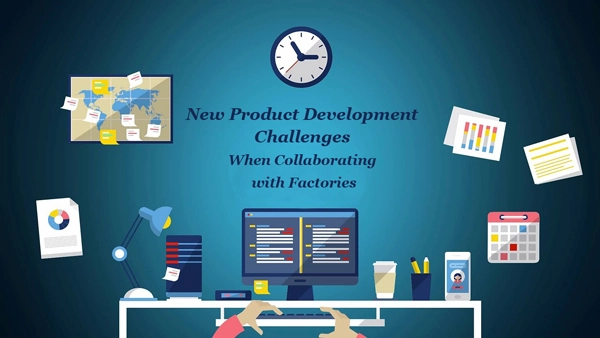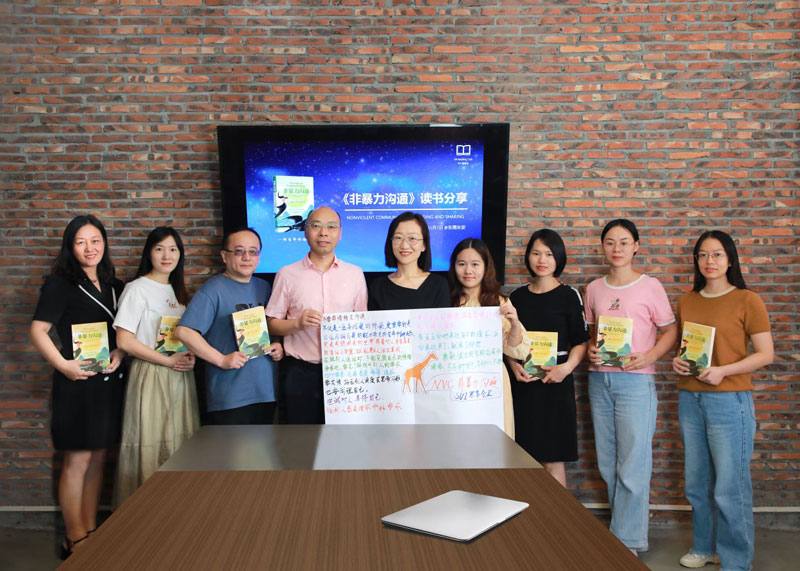7 Product Development Strategies to Improve Efficiency
- Date:
- Author: SVI Content Team
- Share:
Product development (PD) in supply chains is where creative ideas are turned into marketable goods. It is the key to driving business growth and staying competitive. But it’s also one of the most delay-prone processes. Missed goals, poor coordination, or supplier misalignment can all cause setbacks. Even small issues often lead to costly delays.
To avoid these unfortunate results, knowing how to improve product development is important. A better process brings you more than a faster time to market and fewer issues, but also lowers costs and fosters stronger collaboration across teams and suppliers.
If you’re looking for practical ways to improve results, this guide is for you. In this blog, we will walk you through 7 essential strategies that can be used to improve product development efficiency and take more control over your projects.
Strategy 1. Set Specific Goals for Product Development
All things should start with clear objectives before jumping into the product design. The goals are the basis for your whole project. They can lead where you should head off. Many product development failures are not due to insufficient design capabilities, but because of the lack of clear goals from the very beginning.
What to Define Early?
- Who is the target customer?
- What is your target product volume?
- What are your target factory price and selling price?
- What is your budget for product development and production?
- When will your product be launched?
What Is Your Priority in the Project?
Product development resources are limited, and not all projects can pursue “high quality, low cost and fast delivery time”. You should choose your core focus: Innovation, cost control, product quality, product functionality, or appearance fidelity, speed to market, etc.
These goals should be explicit after you research the market, competitors, and trends for your product concept. And to reduce subjective judgment and deviation, a structured evaluation form can be designed to score new product concepts from three dimensions:
- Market appeal: Is there a clear selling point? Does it meet the needs of the target customers?
- Technical feasibility: Is the structure practical? Will it require new molds for rapid prototyping?
- Target selling price matching degree: Is it within the controllable cost range?
Strategy 2. Standardize Processes Where Possible
One major reason product development slows down is a lack of clear processes. When roles, tasks, and workflows aren’t clearly defined, confusion follows. Standardizing your process is a practical strategy for product development that boosts efficiency, reduces errors, and helps new team members quickly get on the same page.
What We Suggest to Implement
- Use Standardized Files for Key Stage: For product specification sheets or checklists, use templates to unify the format to ensure everyone understands the same requirements.
- Create a 3D Structural Review Process: Get product engineering and 3D artists to evaluate the design’s feasibility together to avoid the situation where a design looks great on screen but is hard to manufacture.
- Have a Standard Disassembly & Assembly Feasibility Checklist: It helps engineers assess whether the product can be mass-produced efficiently, easily assembled and maintained.
- Set a “Freeze Point”: All non-critical changes must require approval after certain stages. Any minor changes may lead to a sharp increase in costs and delays in delivery dates once it enters the sampling or mold stage.
- Define Tasks and Deadlines: When each department initiates the development, confirm and commit to their respective key tasks and times to delivery, especially for drawing submissions and product prototyping.
Strategy 3. Limit Active Projects and Long Iterations
Too many projects at once and unlimited revisions are the two main culprits that undermine efficiency. That’s why one of the most underrated product development strategies is learning when to say “no.” Focusing on fewer projects and managing iterations with intention can help reduce lead times in PD.
What to Do to Accelerate Product Development
- Cap Active Projects: Avoid taking on more than your team can handle realistically, which can help them focus on completing key projects, reduce errors and delays caused by multitasking, switching, and improve the work quality.
- Shorten Iteration Cycles: Set an upper limit on the number of modifications, for example, up to three rounds of design/prototyping.
- Set Strict Change Criteria: After each round of sampling, a formal review and responsibility determination should be conducted to confirm the adjustment scope for the next round and avoid repeated ineffective modifications.
Strategy 4. Use Digital Tools to Speed Up Collaboration
To prevent problems like ambiguous progress, unclear responsibilities, and missed corrections, take advantage of digital tools. Tools help manage the project and track progress in real-time, so as to better coordinate and effectively improve product development.
Why We Should Use Digital Tools
- Track Progress Clearly: Use digital tools to record and monitor the status of design and samples to keep everyone aligned and accountable. You can also add reminders for critical deadlines to remind the person in charge 1 to 2 days in advance.
- Document Sample Feedback: Always log changes and sample review notes in the system to avoid misunderstanding from verbal updates.
- Share and Manage Project Files: Let participants save their files (e.g., spec sheet, 3D design, sample photos and videos, testing reports, etc.) by project in a designated location. That way, teams across departments can access the latest files anytime.
Need Help for Your Sourcing Project?
Let SVI Global find the right suppliers and manage your project.
We guarantee quality and on-time delivery!
Strategy 5. Get Suppliers Involved Early
Development is a collaborative behavior, not working in isolation. One product development best practice is to involve your suppliers early in the process. You can get their input on material selection, feasibility and production constraints, and find issues before getting into mass production.
How They Contribute to Efficient Product Development
- Let Suppliers Review 3D Modeling: The PE team can send the drawing and function descriptions to help suppliers evaluate the They can provide suggestions on changes to avoid complications later based on how easily a part can be molded, stamped or assembled.
- Assess Product Materials Sourcing: Ask suppliers to check material lead times and availability. For special materials, it is also necessary to know whether they are easy to obtain or need to be imported, etc.
- Evaluate Mold Details with Factory: They will catch details others might miss, such as parting lines, deep holes or insert placement. This step helps you reduce failed mold trials and the need for multiple mold repairs, with time and costs wasted in vain.
Strategy 6. Hold Regular Reviews and Maintain Open Communication
Regular reviews and real-time communication are the key guarantees for the stable and efficient advancement of the project. Make sure everyone reports progress in regular time (weekly or monthly), and review the development to get feedback and find issues timely. Following up on the project regularly can avoid any delays or deviations in understanding customer needs.
Strategies for Product Development Efficiency
- Regularly Hold Interdepartmental Meetings: Invite key team members—merchandisers, product developers, engineers, and quality teams to participate. In the meeting, update the progress, summarize the current issues (structural problems, sample making progress, quality issues, etc.), and assign clear responsibilities with next steps.
- Have a Tracking System: All issues discussed in meetings should be recorded and tracked. A shared problem-tracking sheet (Excel or digital tool) should outline the problem, person in charge, target completion date, and current status. This ensures nothing gets overlooked and keeps everyone informed.
- Confirm Key Elements with Customer Early: Plan ahead for critical customer confirmations, including functions, materials, colors, costs and unit prices, etc., to prevent internal guesswork.
Strategy 7. Create Backup Plans for Key Risks
In product development, even if the early planning is extremely meticulous, various unexpected situations will always arise. Therefore, one step to accelerate and keep product development stable is to plan multiple options for the risks in PD and supply chain disruptions in advance.
How to Ensure Product Development Efficiency with Backup Plans
- Spot Common Issues: Review past projects to identify recurring issues, like after-sales complaints or frequent design flaws. Then, analyze which of these risks can be addressed earlier in development and build preventive measures into your process.
- Prepare Second Suppliers for Key Materials: For any component with long lead times or unstable supply, pre-identify alternatives. Work on verifying substitute materials in advance so you’re not left scrambling when something runs out.
- Plan for Testing and Delivery Delays: In case product testing comes late, you should set up emergency testing channels or express delivery options. Also, keep spare sample parts on hand in case of damage or failed tests, so you don’t lose time resampling.
Conclusion
As we know, product development is a collaborative effort. Delays often stem from unclear goals, overloaded teams or scattered communication, etc. To accelerate product development in manufacturing, the goal is to identify where the process slows down and then optimize it. Efficiency doesn’t come from one big change. It’s the result of small, consistent improvements across each stage. If you can save 2 to 5 days in each step, you could shorten your overall timeline by weeks.
In this blog, we’ve shared 7 strategies on how to improve product development. You can try applying these methods to help your project move faster and deliver better results.
If you’re facing challenges or need expert help, SVI Global can support you with solutions. Our team can assess your product needs, troubleshoot technical issues, and provide engineering and quality expertise to develop your ideas efficiently and effectively.







